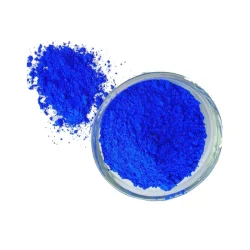Common organic pigments used in inks
2024-03-12
Organic pigments are widely used in the formulation of inks to provide vibrant colors. These pigments are derived from organic compounds and offer a range of hues for various applications. Here are some common organic pigments used in inks:
1. Phthalocyanine Pigments:
- These are versatile and widely used blue and green pigments. They offer excellent color strength, chemical resistance, and lightfastness. Phthalocyanine Blue and Phthalocyanine Green are examples of these pigments.
2. Azo Pigments:
- Azo pigments are a large group of synthetic organic pigments that provide a wide range of colors, including yellows, oranges, and reds. They are known for their bright and intense hues. Examples include Pigment Yellow 1, Pigment Orange 13, and Pigment Red 170.
3. Quinacridone Pigments:
- Quinacridone pigments are known for their high transparency, color intensity, and lightfastness. They are used in a variety of applications, including inks, paints, and plastics. Quinacridone Magenta and Quinacridone Violet are common examples.
4. Dioxazine Pigments:
- Dioxazine pigments are deep violet and purple pigments known for their excellent lightfastness and durability. They are often used in printing inks. Dioxazine Violet is a well-known example.
5. Isoindolinone and Benzimidazolone Pigments:
- These pigments offer a wide range of yellow to red shades with good lightfastness and color strength. They are commonly used in inks and coatings. Examples include Pigment Yellow 110 and Pigment Red 122.
6. Perylene and Perinone Pigments:
- Perylene and perinone pigments are often used for their high-performance properties, providing rich reds and oranges. They are known for their resistance to fading. Perylene Red and Perinone Orange are examples.
7. Indanthrone and Anthraquinone Pigments:
- These pigments provide deep blues and greens with good lightfastness. They are commonly used in printing inks. Indanthrone Blue and Anthraquinone Green are examples.
8. Bismuth Vanadate Pigments:
- Bismuth Vanadate pigments offer bright and high-opacity yellow shades. They are valued for their color strength and durability. Bismuth Vanadate Yellow is a common example.
9. Metal Complex Pigments:
- Metal complex pigments consist of metal-chelated organic compounds and provide a wide range of colors with good lightfastness. They are often used in specialty inks. Examples include Phthalo Blue (Green Shade) and Phthalo Green (Blue Shade).
10. Natural Extracts:
- Some ink formulations may include organic pigments derived from natural sources, such as plant extracts. These can provide unique and earthy colors.
When formulating inks, the choice of organic pigments depends on the specific color requirements, application, and desired properties such as lightfastness and chemical resistance. Manufacturers often blend different pigments to achieve a broader spectrum of colors. It's important to note that the performance of these pigments can vary, and selecting the right combination is crucial for achieving the desired ink characteristics.



